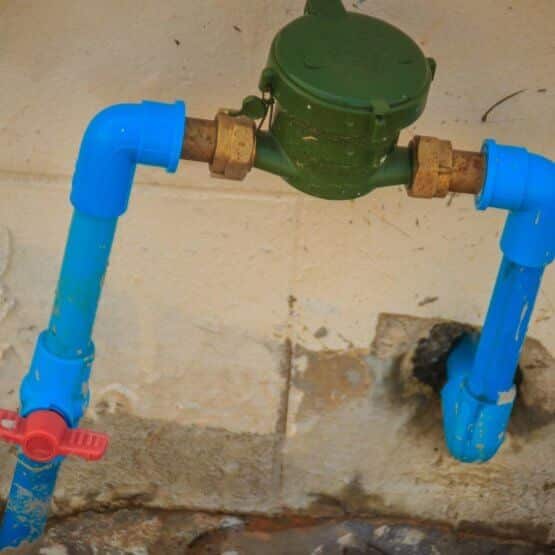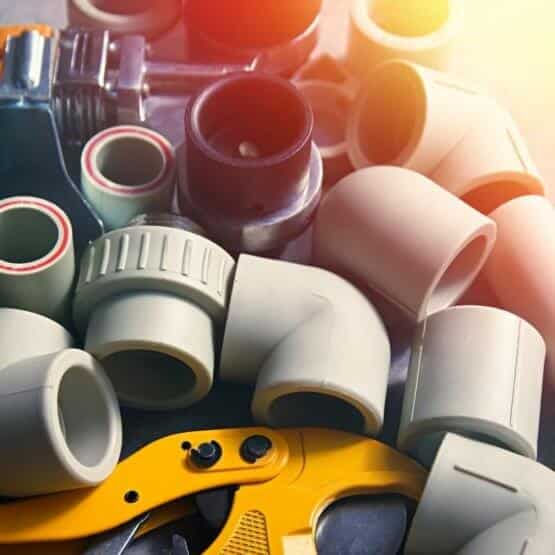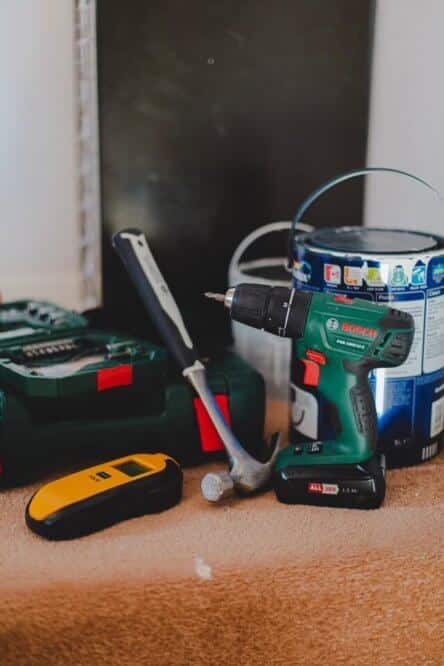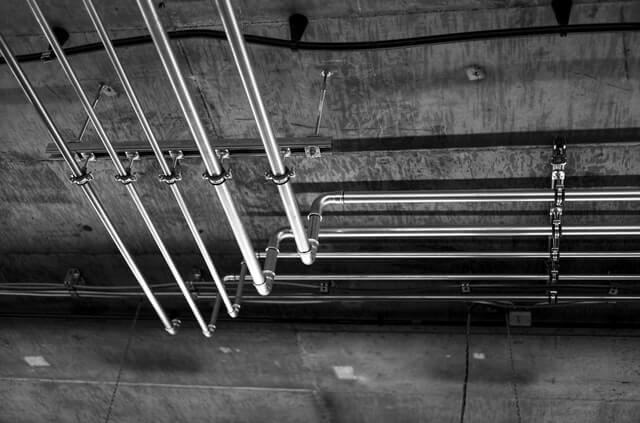The biggest parts of the plumbing system are, of course, pipes and connectors. Pipes are what help transport water from the supply to your sink. You cannot have a sewer system without pipe connectors. Did you know there are many types of PVC pipe connectors, and not just one?
Experienced plumbers already know all about pipes and additional parts. But for the average homeowner, it may be difficult to understand everything about it.
Different types of PVC pipe connectors

To help you, we have created a list of the most common types of connectors and some additional information.
PVC connectors
You are probably aware of what PVC pipes are. Well, if you’re working on a PVC project, you should also understand what PVC pipe connectors are. PVC connectors, commonly known as fittings, bring everything together. As the name suggests, they connect the pipes together.
While there are several types of PVC pipe connectors, all of them can be sorted into two categories:
- Plumbing grade connectors
- Furniture grade connectors
Plumbing grade connectors
Plumbing grade connectors have their place in plumbing drainage systems, as well as sewer systems. People use them both in residential and commercial dwellings.
For basic constructions, they perform their job professionally. However, they aren’t that pretty to look at. This is because there are a lot of barcodes or both raised and embossed letterings covering them.
People buy them because they are rather affordable, and you can find them in most local hardware stores.
Furniture grade connectors
Furniture grade connectors show you what PVC projects can truly be. Most types of PVC connectors that we’ll list further fall into this category.
They don’t stick to the basic idea of connectors, and you can find them in all shapes and forms. You can use them on various types of PVC pipes, and they serve many purposes.
However, furniture grade connectors are more expensive than plumbing grade connectors. Also, while you can find some of them in hardware stores, you have to check professional stores for the others.
Most Common Types of PVC Pipe Connectors

Just like there are several types of PVC pipes, there are many types of PVC pipe connectors.
While some look like you’d imagine fittings to look like, others can seem intimidating. Some of the common connector types are:
- Adapters
- Bushings
- Caps and plugs
- Couplings
- Elbows
- Flanges
- Nipples
- Tees
- Crosses
- Saddle Tees
- Unions
- Wyes
Adapters
Adapters extend runs or change the type of connection at the pipe’s end. This is similar to adapters for electric devices, for example.
Adapters allow you to connect different types of PVC types together. This helps you not to use other tools or more complicated setup.
Adapters come in most standard materials, including brass, copper, malleable, ABS, PVC, and steel.
Bushing
Bushings help you join pipes that have different sizes. This is commonly done by reducing a bigger fitting into a smaller pipe.
Bushings are typically threaded inside, as well as out. This isn’t always the case, though. Bushings take up much less space compared to a union or a coupling – even though all three have the same purpose.
People make bushings from all sorts of piping materials, such as ABS, brass, copper, malleable, stainless steel, and PVC.
Caps and plugs
Caps, as their name suggests, cap the end of the pipe. You put them above the pipe to close it. They can be glued, threaded, or soldered on the pipe.
Plugs have the same purpose, but you put them inside the fitting. They are threaded, so you can continue using the same pipe.
Other than PVC, caps, and plugs are available in brass, copper, ABS, malleable, and steel.
Couplings
A coupling extends the pipe’s run. It can change the size of the pipe, as well. If the coupling reduces the pipe’s size, it’s also called a ‘bell reducer.’ This is because of its bell-like shape.
Couplings usually have female threads, but sometimes they can be unthreaded. You can take unthreaded pipes and either glue them or solder them with copper.
Couplings are one of the most commonly used connectors.
Apart from PVC, they come in ABS, copper, brass, malleable, and steel.
Elbows
Elbows change the direction of the flow of the liquid. They are connectors that are made with an angle, typically either 90 or 45 degrees.
There are also a bit more unique elbows with an angle of 60 or even 22.5 degrees. Elbows are either threaded or sweated. Street elbows have both male and female threads.
This way, you can easily connect different pipes or connectors. There are elbows with a side outlet, as well. They work similarly to a tee with a bend.
Elbows are one of the most crucial connectors in most plumbing projects. They come in PVC, but also in brass, copper, ABS, steel, and malleable.
Flanges
Flanges connect pipes. This is a great idea in case fixing PVC leaks is necessary. Pipes that you use with flanges end up either welded or threaded to the flanges.
Then, you seal them together with bolts. Professionals typically use flanges in industrial applications, especially when there is high pressure involved.
People use them for residential pump systems, as well, usually in the bathroom. These are the connectors that mount the toilet to the floor and extend to the drain.
Flanges come in PVC, copper, brass, and malleable. PVC flanges are the ones that you can find in toilets.
Nipples
Nipples look like short pipes that remind of stubs. They have male threads on both ends. Nipples connect two different straight pipe runs. Short nipples have a unique look, as they have threads from one end all the way to the other one. In other words, the threading goes throughout the length of the pipe. This helps them ensure very tight connections.
Nipples come in brass, copper, steel, malleable, and, of course, PVC.
Tees
Tees resemble the shape of a Latin letter “T.” They help you connect three or more pipes to ensure good water flow.
Essentially, it looks like a fairly long coupling that has an outlet on one side. This outlet comes at a 90-degree angle from the body of the connector. Its size depends on the size of the pipe.
The side outlet is usually referred to as the ‘top,’ and the straight-through part of the fitting is the ‘run.’ If the tee’s run is smaller than the top, this is called a ‘bull head’ connector.
Tees come in PVC, ABS, CPVC, brass, steel, and copper.
Crosses
Crosses are essentially tees with two tops. With them, you can connect four PVC pipes.
They are more limited compared to tees, and they come in less materials. Because of this, many professionals opt to use several tees instead of a cross connector.
Other than PVC, crosses come in malleable and brass.
Saddle tees
If you need to add a pipe or tee to an existing pipe quickly, saddle tees are the way to go. You can also find them under the name ‘snap-tee.’ They are a great way to add a new pipeline without cutting an existing PVC pipe. Commonly, people use saddle tees on irrigation systems. This way, you will easily add another sprinkler line. To complete this task, you need to take a saddle tee and glue it to the pipe. After everything is set, you have to drill another hole, and everything is good to go.
Saddle tees come in PVC only.
Unions
Unions are more or less the same as couplings. If couplings are inconvenient or impractical, professionals use unions. Unsoldered couplings require you to thread pipes into them.
Unions, opposite to that, have their own nut that creates a seal that connects two pipes. For example, this is a great choice if you have two fixed pipes that you can’t thread into couplings.
This way, any future repairs will be much easier and straightforward. There are even dielectric unions that professionals use to join pipes made from different metal materials.
This is enabled thanks to their anti-corrosion properties. However, unions come with a few downsides. The main one is that you can’t use them with LP or natural gas.
Unions come in PVC, brass, CPVC, malleable, brass, and steel.
Wyes
You can use wyes to connect drainage pipes. They come with a 45-degree angle. Wyes keep the water flow smooth. This is different than tees, as you use tees to make vertical drain connections. Wyes connect flat horizontal pipes.
Wyes are made from PVC, ABS, and brass.
Are There Different Sizes of PVC Pipe Connectors?

Just like there are various types of PVC pipe connectors, there are also numerous sizes. Just like PVC pipes, PVC pipe connections use a nominal sizing system.
This is done so you can easily find pipes and connectors that are compatible. In theory, all 2″ pipes will fit all 2″ connectors.
While this seems rather straightforward, there are a few confusing factors.
This is because the PVC pipe’s outer diameter can be bigger than the stated measurement. In other words, a PVC pipe of 2″ will have an outer diameter that is bigger than 2″.
However, simultaneously, a PVC connector will also have an outer diameter bigger than the labeled measurement!
This is why nominal sizing is extremely important. A 2″ pipe will always fit a 2″ connector, no matter if the pipe is 40 or 80. Even if a 2″ connector has a wider opening, it will still fit on a 2″ pipe.
This is because both have outer diameters wider than 2″.
A good side of PVC connectors is that you can use them with pipes made from non-PVC materials. Suppose this is the case; the nominal size is not as important anymore.
Now you don’t need to look at the outside diameter of everything. Instead, the pipe’s outer diameter needs to be compatible with the inner diameter or the connector.
However, a 2″ pipe of copper, for example, might not fit a 2″ PVC pipe connector.
A nominal size only matters if both the pipe and the connector are PVC.
This is why it’s important to know all existing types of PVC pipe connectors. Different connectors are made in different ways.
Understanding them and understanding how manufacturers make them is crucial to finding a pipe that fits.
Bottom Line
Just like there are various types of PVC pipes, there are many types of PVC pipe connectors. Each has its own purpose, and each has advantages and downsides.
While PVC pipe connectors are most effective when you use them with PVC pipes, this isn’t necessary. Plumbers use them for pipes of all shapes and sizes.
Of course, before you do any plumbing DIY project, you should consult a professional. This is especially true if you’re messing with your house’s sewage system.
Still, understanding how PVC connectors work is helpful knowledge.

Michael Davis is a heating & plumbing expert who currently works as independent contractor in SC. He also writes for Plumbertip.
For almost 10 years he worked on various plumbing tasks across South Carolina.


